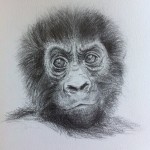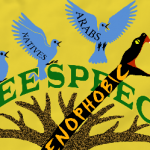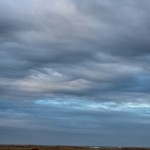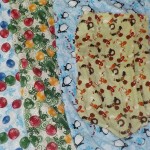Being a Metis (from northern Ontario, Canada) had left me wanting to know more about my heritage. And along with that I wanted to learn about cultures that have harmonious relations with the ecosystem they developed from. This has led me to volunteer and participate in a fair number of related ceremonies.
I’ve enjoyed my experiences with these ceremonies and have learned a lot on various approaches to encouraging harmonious living with our environment, relations, and home through them. I have a few favourite kinds and still am learning from them, especially as different teachers lead them and share the different things they know. One thing that needs to be remembered for native ceremonies is that ceremonies can be vastly different from each other between individual teachers within the same cultural sphere. Most of my experience is from the Anishnabe (Ojibway) culture, as it is a prominent culture in my region, and is one that I was drawn to because I am directly related to it through my ancestry.
One of my favourite things to learn are the stories. Stories can tell a great deal more than direct instruction. Stories told to entertain often have subtle messages about how to go about things in life. One theme I have noticed in some Anishnabe tellings is that whenever the main character – often the cultural hero – has encountered some peril they learn from a relation (the prevalent worldview being animistic, so it could be from a plant, animal – including human/humanoid animal, water, stone or others) how to recover, usually through respectful action or medicine. And because this is a crucial point (often one among many) that may make or break the character and/or their journey, you definitely remember how they got past it – and therefore reinforces the memory of that lesson so that you end up doing it yourself if you ever meet the same sort of peril. By the way, Cedar is Awesome!
There is another thing that is also very important. To learn the true depth of a teaching you need to suspend any judgement until well past it (unless one’s physical safety is of concern). Now as a naturalistic individual this may seem odd, and it is to a certain degree. Being naturalistic may mean that I disbelieve supernatural explanations, but as a naturalist I do believe all things are natural phenomenon. As an example, magnetism and electricity was seen as a supernatural phenomenon for quite some time. But once it was studied, tested, and peer reviewed, numerous times over, it was found to be a natural phenomenon. There are likely still things like that today that we could benefit from understanding better but is currently seen as supernatural superstition. In other words, I think all things that are prevalently understood with supernatural explanations shouldn’t be dismissed by researchers – All phenomenon are worthy of study. And so I have a preference for claims to have some thorough scrutiny, preferably with a few runs of the scientific method before I make a final judgement on it. Until then I try to keep an open mind on what is going on. These days the frontier appears to be within the realm of psychology and quantum physics (as understood by physicists, otherwise its liable toward pseudo science that does a disservice to the subject). So our understanding of various mental states and the physical world could very well drastically change and end up changing our perceptions of things currently considered superstitious by many. Meditation and yoga being an excellent current example.
My interests tend toward how religious elements effect our mental states and what we could learn from them for the betterment of society as a whole. Again, meditation and yoga have come to be found to be beneficial to society as a whole for mental and physical health (although I consider mental health to be inseparable from physical health). I still consider someone’s experiences of the supernatural to have been experienced, I just perceive it to be a form of natural phenomenon, likely a psychological one, we’ve yet to fully understand – like dreams. So currently I file such topics under, “I don’t know.” but would like to observe it more if I find there is an apparent benefit to participants. I think that is why there is a growing number of Humanistic Churches – they’ve found some aspects of religion to be beneficial to society and see it being counterproductive to toss out the whole thing for what bad they’ve found and end up loosing what was good too.
Even with an naturalistic outlook I remain able to and have fully participated in sweat lodges, various women’s ceremonies, as a helper for fasts, and a Yuwipi (Lakota Tie-up). I find that in all these kinds of ceremonies there can be prevalent sexism. Namely the requirement of women to wear long skirts and sit in certain ways, and gender segregation overall in roles and ceremonies. Men, for example, cannot attend Moon Ceremonies. While women cannot attend most any ceremony while on their ‘moon time’. Both men and women cannot play drums at the same time and some drums can only be played by certain genders. There are various reasons for this divide, either way my point is that sexism is there no matter how you feel about it and would need to follow suit in order to participate. Curiously, early settler encounters record native clothing of women being knee-length skirts or dresses – which makes sense for practicality in woodland settings. I keep tripping over mine. The ankle length skirts and a number of various other female expected roles that are encouraged today likely stem from European, especially priestly, influences for perceived modesty. There certainly remains a number of gender conventions that stem from within native cultures too. Even with these expected gender roles some traditional teachers have decided that they want to be progressive and allow certain things to be changed in their own teachings. There can be quite a bit of strife from within communities for such divergent approaches, but they exist.

Out of all of these ceremonies I most enjoy the sweat lodges, and the women ceremonies – which I believe would be beneficial to men as well. I’m not so keen on the fasting since it involves deprivation of food and water, and you are expected to stand and expose yourself to the elements – all being stressors that can trigger hallucinations, which I suppose is the point. I am concerned about my personal health so such an experience is not for me. I still do enjoy helping for fasts and learning from others there. I personally believe that some elements of these fasts would remain beneficial outside food and water deprivation, and the hallucinatory experience. Primarily the isolation in a wilderness setting for long periods of time without the distraction of preparing meals and the like. Having done solo camping before I can anecdotally attest to that. Without distractions you are forced to listen to your own thoughts and deal with what issues you have going on. The wilderness setting is the ultimate classroom for learning. Most fasters come down from the mountain with stories of how their environment or the wildlife, no matter the kind, had something to learn from.
I wasn’t always so keenly naturalistic. I used to lean much further toward agnostic – being much more uncertain on what I believed about supernatural stuff. Looking back, I believe one ceremony experience was the motivator toward a more naturalistic stance for me. The Yuwipi.
I had been very open with my very diverse believing friends, who brought me to and shared their wonderously various practices (Most being exactly the sorts I was hoping to learn from – the ecosystem friendly kinds), that I was quite agnostic about it all. I was assured that it would all be laid to rest with the Yuwipi that we were going be privileged to experience as a healer who does it is coming through the area to do it for the island community. At the ceremony the healer spoke with those who needed healing to find out their needs, then was wrapped in a ceremonial blanket, bound and laid onto the alter as an offering to the spirits. The alter had consisted of an alter blanket, a set number of tobacco ties with a set of specific colors oriented in a specific way (four colors to each cardinal direction), buffalo skull, and a few other things that evade my memory. I mostly remember the ties because I helped make them – there were a lot! Once this was all set up, no light would be permitted in the room. Anything that could bring in light was to be removed. Keylights, phones, lighters, etc. All the windows and doors were covered up too. Then the ceremony would begin with a talking circle, where each person present would have a turn to speak their desires for the ceremony. After the talking circle the healer would call out for the spirits to come to our aid. Offering their soul as a sacrifice to enable this, shortening their life for the benefit of the community. In this case a hawk visited – you could hear it fly down onto the alter. It had a message for the people present. Then there were children spirits who had a message. Both the hawk and children would do what they could to heal the people. Then there is drumming, chanting and dancing in the pitch dark. When this began the children spirits danced too – you could see a blue glow and hear the shaker they used from the spirit world. The hawk would fly through the people present and give healings and blessings. The children would do the same with their spirit shaker. You were to respectfully keep from touching them because they may become scared off before people could get the healing they sought. I was elated to see what was before my eyes and hear with my ears. We danced for what seemed an hour or more. The spirit shaker had come before me once already, as it passed I felt a leather dress brush past me. I found it curiously similar to the healer’s spouse’s dress. It was the second time that my curiosity got the better of me. I thought, “If the spirit could see me just fine then they would move away from me if I got too uncomfortably close for them.” So I slowly reached my hand toward it, and I touched a very human hand holding a very man-made shaker. I recognized the hand that I shook earlier as the spouse to the healer. They were unusually small, short fine fingered hands when I shook them. As was this hand that I had just touched, and so the leather dress made sense too. I was extremely disappointed and sat down on my chair. Only to find the shaker jabbing me in the face. Then a right hand touched my face, as if to find it. It had a hawk wing bound to it. They seemed to have thought I was still standing and intended to instead jab me in the chest defensively. The hand with the hawk wing strapped on it brushed the feathers of the wing over my face and head a few times. Then moved on.
It seemed to have gone on for another hour. In that time I recalled some of my studies in bioluminescence which led me to stumbling across mechanoluminescence and its related parts. One of the parts described how quartz would emit a blue light when struck against one another and was common in Lakota ceremonial shakers for this purpose. How did I not remember that when I first saw it! I was even considering making one myself! I might still in fact. That luminescence study spree led me away from that sub-subject onto other things I wanted to learn more about in the subject, and it was some months ago. So forgetting was understandable. It was pretty neat to see it in action right in front of me in a way it was traditionally used. Not something many people who like to study such things get to do. The ceremony was coming to a close. The spirits were ready to go and were given leave and a piece of soul they required for the work, and the healer requested that they would be permitted to stay in this world. As they left there was a swoosh sound as if from a blanket on the alter, and the lights came on almost instantly after, revealing the healer standing, unbound, and unwrapped by the spirits. Following that people were welcome to make flesh offerings. I don’t remember much of the details that went into that. What I do remember is that those who decided to make flesh offerings would have their upper arm cut and have a thread with a feather tied onto it pulled through. From what I recall it seems that every individual who did the offering had it done on both arms, and some had it done twice on each. There was dried sage leaves that I had helped with preparing earlier that were used to stem the blood flow after their prayer dance on the alter.
Afterwards there was a potluck feast. It was in the early hours of the night at this point. As a helper I brought out the dishes and laid it in the center of the seated circles, then brought each dish around so everyone can pick from it. There were a great many wonderful dishes present. I always appreciated wild game and it was there in abundance. Notably not for long. As a helper I served myself last. Then I washed the resulting dishes and kept to myself in the kitchen for the rest of the late night. I noticed that the healer, their spouse and child were deliberating quite animatedly in a corner since the ending of the ceremony. I was just getting my own thoughts together on how I felt about it. As scenarios go, this one got interesting, since we had shared a ride there, we would be sharing a ride back. On the way back they spoke little and seemed stiffer than they were before. Then the spouse put out the question, “what did you think of the tie-up?” I answered quickly with, “It was wild.” To that their child had said, “See, she doesn’t know.” and was quickly hushed by their parents. When we got out of the vehicle we shook hands and hugged goodbye and wished a good journey for the travelling healer and their family. They were obviously still uncertain about what I knew, and still I don’t plan on saying anything about this healer or their family to cause them grief. I see no good from it. I do see good from telling this story so that people have scrutiny when it comes to experiences like these, so long as the privacy of this family is preserved. Malice toward anyone does nobody any good.
It was after speaking with my spouse when I got home that it became abundantly clear that this was a seance, just one of aboriginal origin. This was quite some time ago. Likely well over a year or two. No matter the experience I have in these ceremonies I partake in, I try to learn how such a ceremony may arise and what good it could have on the people involved. This is just one rare time when I knew there was nothing supernatural behind it, but it doesn’t mean there was nothing of value in it. Other people present didn’t know like I did, and I had kept it to myself and my significant other until this was written. So those reading this will be the first to know outside my spouse and me. Why hadn’t I told my friends? I truly don’t know. I don’t want to cause strife between us, they are too dear to me to let something like this to come between us. Part of me wants them to read this as a way of telling them. Another part of me hopes that writing this gives me some firm footing on how to breach the subject and do so in person. Either way, I couldn’t keep this to myself and would have shared it in a public sphere like this one eventually. It felt wrong to keep it to myself and so it needed to be said. For the people who were there and didn’t know what I knew, for the most part they appeared to be feeling uplifted. It was certainly a confidence booster and likely worked much like a placebo for ailments. I can’t tell much else from that experience, other than it reaffirming or establishing a belief in the supernatural by providing faux evidence with sounds and light. It was indeed a wild experience. But unfortunately, I think outside of getting some fantastic tips on setting the ambiance for ceremonies, there isn’t much benefit to it. Unless you think the placebo and confidence boost are worth the lies needed to make it work.
I question my perceptions and experiences all the time, and I do prefer not knowing over blind certainty any day. I feel that unless the supernatural subject (or any subject for that matter) is being thoroughly scrutinized, it is liable to be a distraction from what I can be more productive with. I fear that to believe in the existence of the supernatural and live according to that belief when there is no scientific evidence of it being real, would end up with me living inconsequentially. That is why I focus on the tangible things I can do, that way I know the actual impacts I’m making. I don’t hold it against others that decide otherwise and wouldn’t discourage them from their spiritual pursuits. This is just the way I feel about it for my own life and felt the need to share my experiences. Hopefully what I shared could be helpful to others in their journey.
















